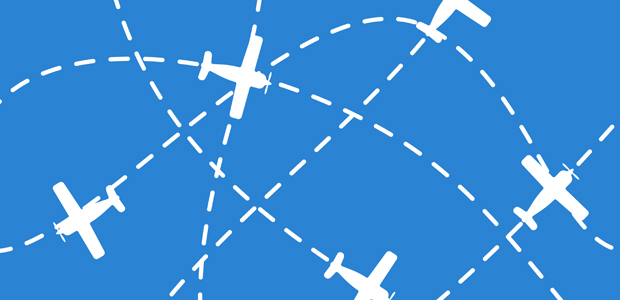
UN Meeting Allows for Satellite Tracking of Planes
ADS-B signals will be extending beyond line-of-sight to facilitate reporting the position of aircraft equipped with the signal anywhere in the world, including oceanic, polar and other remote areas, according to the UN.
A U.N. meeting has cleared the way for satellite real-time tracking of airliners, a decision that was spurred by the disappearance of the MH370 aircraft in March 2014 with 239 people on board. The aircraft's wreckage has not been found, and the Australian Transport Safety Bureau continues to lead an underwater search in which two ships are currently participating.
Current radar systems are land-based, leaving 70 percent of the Earth's surface uncovered. The decision was made at the U.N. World Radiocommunication Conference in Geneva, Switzerland.
"The WRC's action today will enable better tracking and location of aircraft that otherwise could disappear from terrestrial tracking systems," said U.S. Ambassador Decker Anstrom, who is leading the U.S. delegation at the conference. "This is an excellent example of the ability of nations, working through the ITU process, to take action in improving peoples' lives."
The International Telecommunication Union announced that frequency band 1087.7-1092.3 MHz has been allocated to the aeronautical mobile-satellite service, known as "Earth-to-space," for reception by space stations of Automatic Dependent Surveillance-Broadcast emissions from aircraft transmitters, which means ADS-B signals will be extending beyond line-of-sight to facilitate reporting the position of aircraft equipped with the signal anywhere in the world, including oceanic, polar and other remote areas, according to the UN.
"In reaching this agreement at [the conference], ITU has responded in record time to the expectations of the global community on the major issue concerning global flight tracking," ITU Secretary-General Houlin Zhao said in a statement. "ITU will continue to make every effort to improve flight tracking for civil aviation."
"The allocation of frequencies for reception of ADS-B signals from aircraft by space stations will enable real-time tracking of aircraft anywhere in the world," added François Rancy, director of the ITU Radiocommunication Bureau. "We will continue to work with ICAO and other international organizations to enhance safety in the skies."